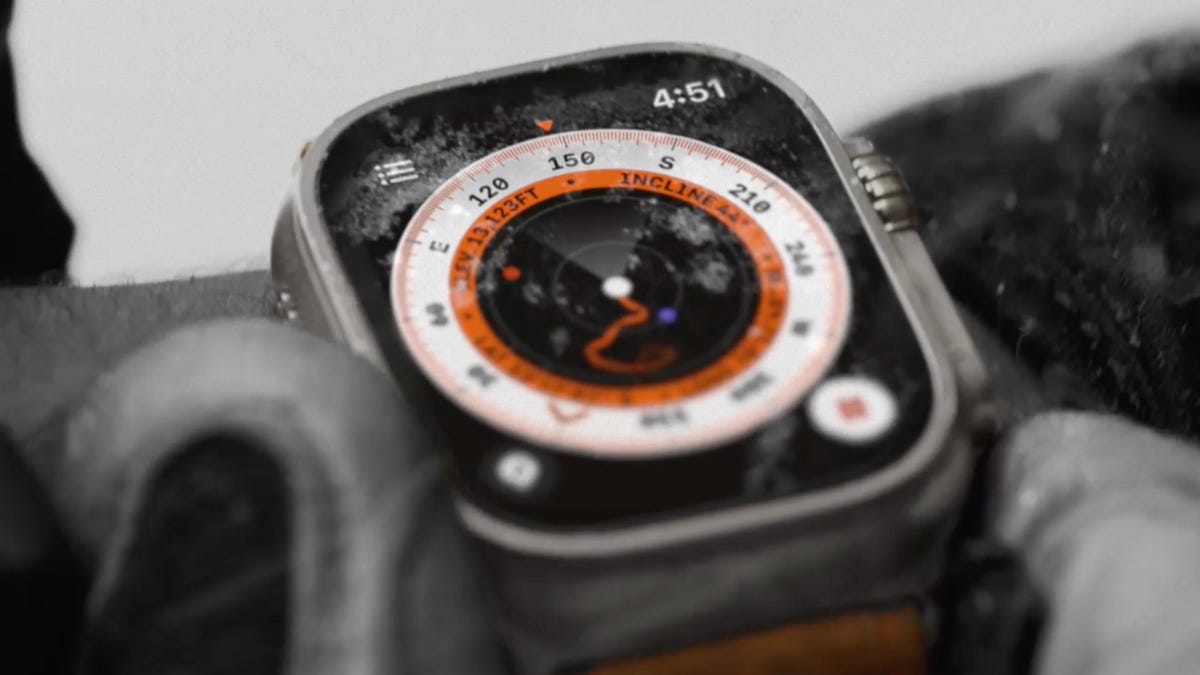Apple announced multiple products at the Sep 7th, 2022 event. The Watch Ultra made headlines due to the Dual-Frequency GPS or L1 + L5 support. The non-tech savvy viewer’s confusion piqued on why it’s a unique feature. I have explained the Dual-Frequency GPS technology and why Apple is making a big deal in the latest event. Read the entire article step-by-step to avoid confusion.
Apple Watch Ultra Dual-Frequency GPS: Simple Explanation
GPS is a tracking technology, but we have seen GPS-enabled smartphone making inaccurate location feed in Google and Apple Maps. I moved to the next lane, and Google Maps couldn’t update the information instantly.
A. The Dual-Frequency GPS improves the accuracy and updates the Watch Ultra’s location in real-time on the maps.
B. The tracker notes down the steps more accurately.
C. The L1 + L5 combination isn’t bothered by the large constructions.
The location tracking sensors gets messed up when the user is surrounded by skyscrapers, mountains, and remote location. Here’s a simple explanation of the Watch Ultra’s new feature.
What is L5 in Watch Ultra?
There are three GPS signals, and they are L1, L2, and L5. The latest L5 operates at 1176 MHz. The GNSS signal is known as the most advanced GPS signal to date. But, the latest L5 technology seems to be in its infancy. The established authorities have adopted GPS technology in aviation because it is classified under the safety-of-life and transportation industry. Apple brought the L5 civilian version in the Watch Ultra.
What is Dual-Frequency GPS in Watch Ultra?
The majority of the devices have L1 (first-gen GPS) technology. Apple has implemented the L5 chip inside the Watch Ultra to increase the feature list. The manufacturer didn’t remove the existing L1 from the device.
The L1 is a frequency, and L5 is a frequency. Apple has added L1 and L5 to the Watch Ultra, and that’s how the Dual-Frequency GPS formed. The latest Apple Smart Watch utilizes the L1 & L5 to provide accurate positioning information.
Dual-Frequency GPS vs Single-Frequency GPS: Does it matter?
We have to understand the difference between Single and Dual Frequency benefits. Of course, you have to understand who needs the Dual-Frequency GPS feature. The Watch Ultra has advanced features, but the manufacturer released the device for adventurous users.
Let’s understand how GPS technology works, and then you will comprehend the Dual-Frequency purpose. GPS (Global Positioning System) is a satellite-based radio-navigation system that relays time and location information to devices integrated with GPS receivers. GPS-enabled devices connect to four or five satellites to provide in-depth information.
The satellite and receivers determine the location and position of the device. The military and civilians adopted the L1 technology, but it has minor inaccuracy. The satellite transmits geo-location information to a GPS receiver with the potential error of ten meters to fifteen meters.
Optimal conditions contribute to minor errors in the GPS information. Travelers move into places with large structures like skyscrapers, mountains, hills, and old buildings and experience inaccurate GPS information. The error rate rapidly increases when the users move around the large infrastructures. The GPS signals interference increases, and you end up frustrated. The Dual-Frequency technology was initiated to tackle the GPS location service challenges in the urban and wild.
Urban users and travelers will never fall for the potential errors caused by the L1 GPS technology. No walls or natural structures can prevent the Watch Ultra GPS receivers from transmitting accurate location information. The Apple Watch Ultra delivers robust performance along with positioning information. The
L1 & L5 combination is utilized to erase the potential errors from the equation.



0 Comments